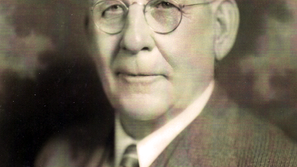Nuclear war: How close are we?
- Jim Glynn
- Jan 26, 2018
- 4 min read
Are you alarmed by the drift toward war?
Are you worried by recent U.S. blunders?
These questions appear on the cover of “The Causes of World War Three,” a book written by C. Wright Mills and published in 1958. The book was required reading for a class in “Social Disorganization,” which I took as a college student, and I still have my copy. It sold in paperback format for 50 cents when I purchased it in 1963. I don’t know why I still have it. I wasn’t particularly impressed with the author’s analysis, with one exception: He believed that World War III would not be started by intention. He said that the major cause of World War III would be the preparation for it. The conflagration itself would likely be accidental.
Although the text is now 60 years old, it seems remarkably contemporary in light of two events that have occurred this month. First, there was the false alarm that put Hawaiian residents in a panic. Thirty-eight minutes later, the warning was cancelled.
A few days later, Japan’s public broadcasting system sent an erroneous message that a North Korean missile would soon strike the island nation, urging citizens to take cover. Five minutes later, the broadcaster, NHK, rectified its mistake. Although Japan corrected the error faster than did Hawaii, the time lag in both instances is significant. In either case, retaliation and counter-retaliation was a potential outcome. The Bedford incident
That’s two near misses within a few days, after six decades of trying to perfect a fail-safe system to prevent the onset of a war of undoubtedly epic consequences. The frightening thing about these events was poignantly illustrated in “The Bedford Incident,” a 1965 film, directed by James B. Harris.
The plot of the movie pits Captain Eric Finlander (Richard Widmark), commander of a destroyer (USS Bedford), against photojournalist Ben Munceford (Sidney Poitier), who is onboard to document life on the ship. Finlander is in pursuit of a Soviet submarine near the coast of Greenland. During the tense chase, Finlander is constantly criticizing Ensign Ralston (James MacArthur) for insignificant errors, and Ralston‘s job is of momentous importance.
Munceford questions the wisdom behind the actions that Finlander is taking. His inquiries become specifically targeted at Finlander’s motives as the situation becomes more dangerous. And, Finlander’s frustration and aggression escalate. As the contest between the two ships continues, the crew becomes exhausted, and Ralston retires to his berth, only to be recalled to duty within minutes as tensions continue to mount.
Eventually, Finlander rams the sub’s snorkel, which will force the ship, which has nuclear-armed torpedoes, to surface. As the verbal skirmish between Finlander and Munceford intensifies, Ralston’s nerves appear to frazzle. Munceford asks Finlander what he will do if the submarine is prepared to do battle. Finlander, who has run out of patience with the journalist’s persistent questioning, shouts, “If he fires one, I’ll fire one.” Ensign Ralston, suffering from sleep deprivation and on the verge of a nervous breakdown, hears Finlander’s exclamation and replies, “Fire one, Aye Sir,” and hits the button that launches a nuclear missile.
As soon as the crew realizes that a mistake has been committed, efforts are made to disarm the missile’s warhead. But, it’s too late. Seconds before the nuclear device detonates on the enemy, torpedoes from the sub are detected heading for the destroyer. The film ends with still shots of Bedford crewmen “melting” on celluloid media. The movie’s concluding image is of the iconic mushroom cloud. Reality
The movie, of course, was a fictional depiction. However, there have been many false alarms over the years, the best known of which was probably the Cuban missile crisis during the Kennedy administration. In that instance, cooler heads on both the Soviet and American sides prevailed, and disaster was averted. There were several other close calls in the United States, including Colorado Springs (1956); Omaha (1961); Duluth (1962); NAS Colorado (1979); Washington, D.C. (1980); Louisiana (2007); and WAFB, Wyoming (2010).
Probably the closest that the world has come to actual nuclear war, however, was the incident that occurred on September 26, 1983. The Soviet Union had installed a new early-warning system that could monitor the actual launch of ICBMs. The technology was much like that used by the U.S., except that instead of viewing the earth from a straight-down perspective utilizing orbiting satellites, the Soviet system’s “eyes” were set on the horizon. The idea was that this perspective would minimize the chance of viewing a natural phenomenon, like a volcanic eruption, as a missile launch. Using the new system, a few minutes after launch, missiles would be silhouetted against the blackness of outer space.
From the position of the Soviet Union’s early-warning system, the Russians had a good view of the continental U.S. missile fields. However, on that one particular day, the sun, satellite, and U.S. launch sites all lined up in such a way as to maximize the sunlight reflected from high-altitude clouds. U.S. military analysts speculate that Sept. 26, 1983, might have been the first time that this phenomenon occurred after the Soviet system had been installed.
Lt. Col. Stanislav Petrov was in charge of a secret bunker (Serpukhov-15) when the images appeared. They indicated that several missiles had been launched from U.S. fields, and Petrov had been told repeatedly that the U.S would initiate a massive strike designed to incapacitate the Soviet Union in a single attack.
Petrov was able to identify at least five missiles, all of which appeared to be heading toward the Russian homeland. Under this circumstance, the protocol was simple. Petrov should have initiated the procedures for a retaliatory launch. But he didn’t. Why not? Well, afterward, U.S. scientists speculated that Russia might have been hesitant to begin a massive war based on data from a new and unique system. But, Petrov, himself, had a different explanation. He said that he refused to pass the alert to his superiors because “when people start a war, they don’t start it with only five missiles.”
Once again, like the Cuban missile crisis, it was only a cool-headed, rational decision by a person whose reasoning averted a certain disaster.
If C. Wright Mills were alive today, I think he’d be amazed that on both occasions the “final accident” was avoided because of the concerted actions of reasonable people. He’d likely look at Kim Jong Un and Donald J. Trump and say, “WW III will not be caused by accident, but rather by arrogance and stupidity.”
• • •
Jim Glynn may be contacted at j_glynn@att.net.


























Comments